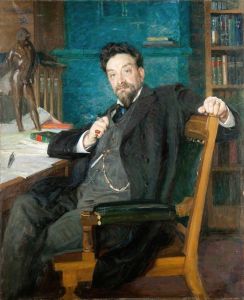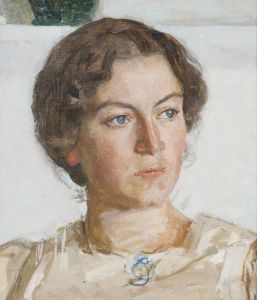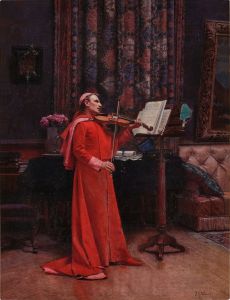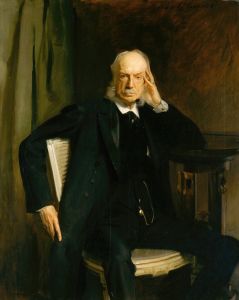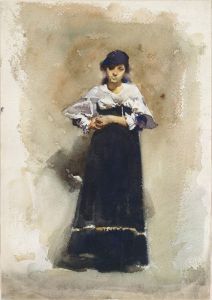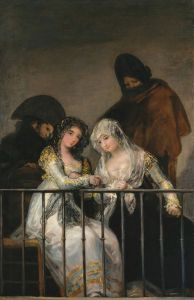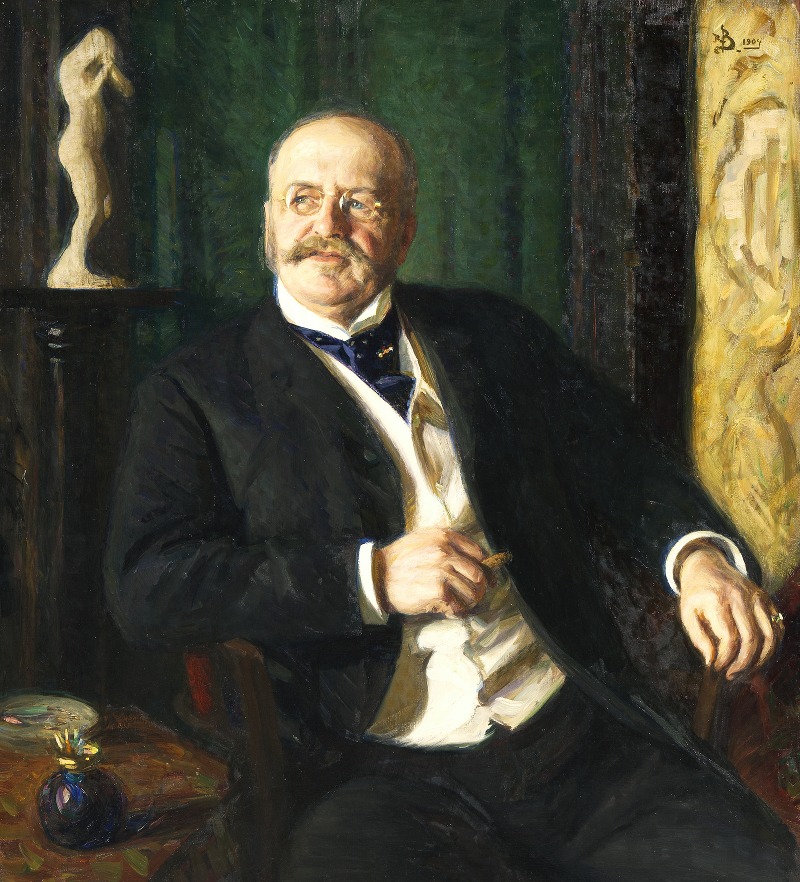
Julius Caspar, Merchant
A hand-painted replica of Richard Bergh’s masterpiece Julius Caspar, Merchant, meticulously crafted by professional artists to capture the true essence of the original. Each piece is created with museum-quality canvas and rare mineral pigments, carefully painted by experienced artists with delicate brushstrokes and rich, layered colors to perfectly recreate the texture of the original artwork. Unlike machine-printed reproductions, this hand-painted version brings the painting to life, infused with the artist’s emotions and skill in every stroke. Whether for personal collection or home decoration, it instantly elevates the artistic atmosphere of any space.
Richard Bergh was a prominent Swedish painter known for his contributions to the national romantic movement in Sweden during the late 19th and early 20th centuries. One of his notable works is the painting "Julius Caspar, Merchant." This artwork exemplifies Bergh's skill in portraiture and his ability to capture the essence of his subjects with a keen eye for detail and character.
Richard Bergh was born on December 28, 1858, in Stockholm, Sweden. He was the son of Edvard Bergh, a landscape painter, which provided him with an early exposure to the world of art. Bergh studied at the Royal Swedish Academy of Arts in Stockholm, where he honed his skills and developed his artistic style. He later traveled to Paris, where he was influenced by the contemporary art movements of the time, including realism and symbolism.
"Julius Caspar, Merchant" is a portrait that reflects Bergh's interest in capturing the personality and social status of his subjects. The painting depicts Julius Caspar, a merchant, and is characterized by its attention to detail and the realistic portrayal of the sitter. Bergh's use of light and shadow, as well as his meticulous rendering of textures, such as clothing and facial features, demonstrate his technical proficiency and his commitment to realism.
The portrait is notable for its composition and the way Bergh has positioned the subject. Julius Caspar is presented in a dignified manner, which suggests his importance and status as a merchant. The background of the painting is relatively simple, which serves to focus the viewer's attention on the subject. Bergh's use of color is subtle yet effective, with a palette that enhances the realism of the portrait.
Bergh's work, including "Julius Caspar, Merchant," is often associated with the national romantic movement in Sweden. This movement sought to emphasize the cultural and historical identity of Sweden through art. Bergh, along with other artists of his time, aimed to create works that reflected Swedish society and its values. His portraits often depicted individuals who were significant in their respective fields, thereby contributing to a broader understanding of Swedish culture and history.
Throughout his career, Richard Bergh was not only a painter but also an influential figure in the Swedish art community. He served as the director of the Swedish National Museum from 1915 until his death in 1919. In this role, he played a crucial part in shaping the direction of Swedish art and promoting the works of Swedish artists.
"Julius Caspar, Merchant" remains an important example of Bergh's portraiture and his ability to convey the character and status of his subjects. The painting is a testament to Bergh's skill as an artist and his contribution to Swedish art during a period of significant cultural development.










